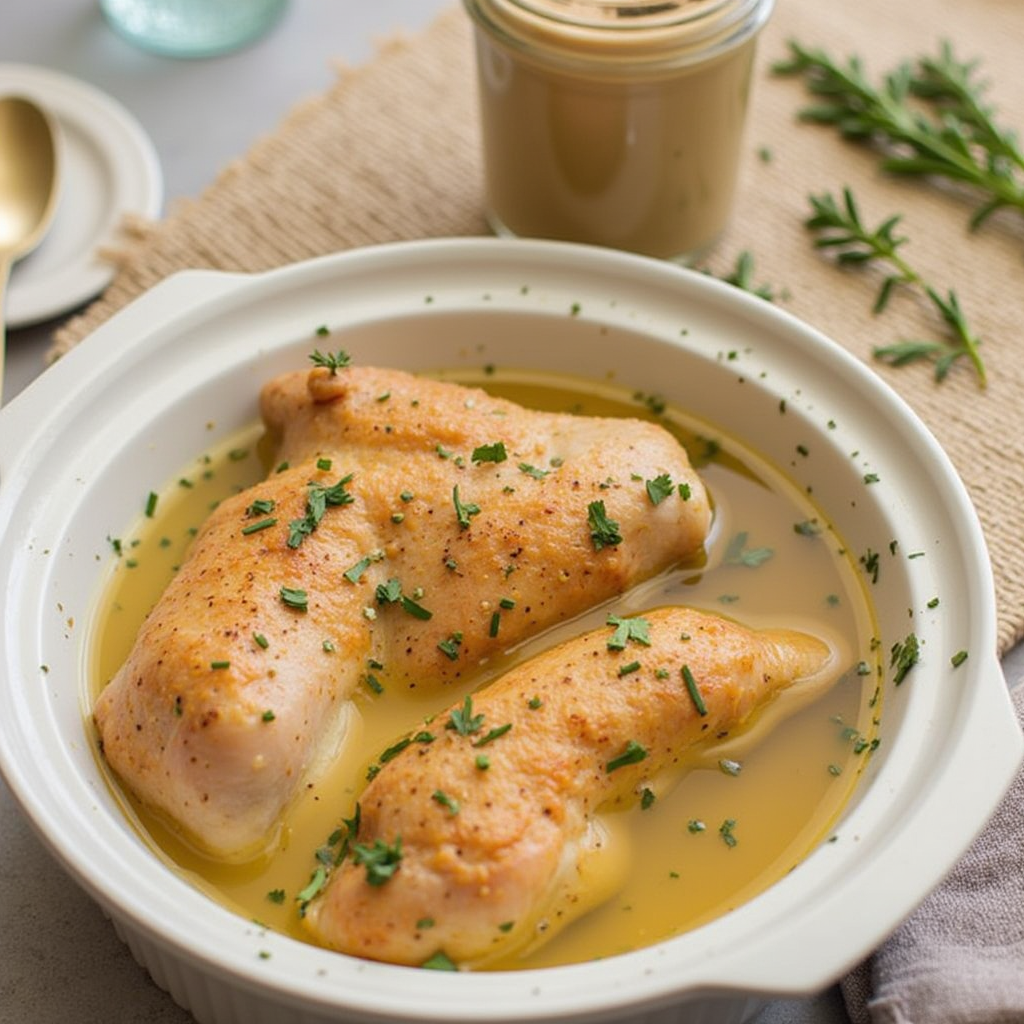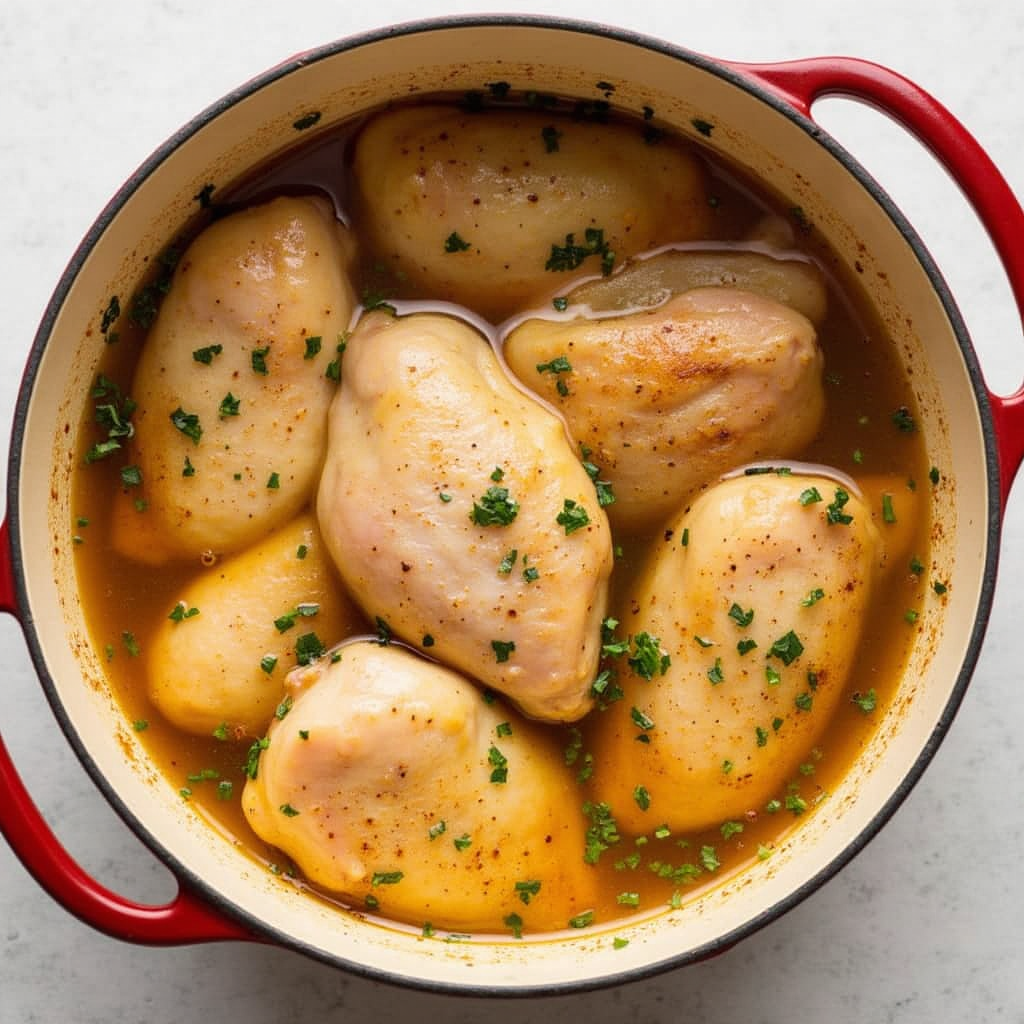Introduction
Simple Chicken Brine Recipe. If you’ve ever wondered how to achieve chicken that’s juicy, tender, and bursting with flavor, the secret lies in one simple kitchen trick: brining. Brining is a game-changer, transforming even basic cuts of chicken into mouthwatering meals. Let’s unravel the science behind this technique and explore an easy recipe that’ll elevate your cooking instantly.
Table of Contents
What is a Chicken Brine?
The Purpose of Brining
Brining involves soaking chicken in a solution of salt, water, and sometimes sugar. This process enhances the chicken’s moisture content and infuses it with flavor.
How Brining Enhances Flavor and Texture
Salt in the brine breaks down muscle proteins, allowing the chicken to retain more water. The result? Juicy, tender chicken with a well-rounded taste.
Ingredients for a Basic Chicken Brine

Key Ingredients and Their Roles
- Water: The base of the brine
- Salt: Enhances flavor and moisture retention
- Sugar: Balances saltiness and adds a hint of sweetness
Optional Additions for Extra Flavor
- Fresh herbs like thyme, rosemary, or parsley
- Crushed garlic cloves
- Lemon or orange slices
- Whole spices such as black peppercorns or bay leaves
Step-by-Step Guide to Making Chicken Brine
Dissolving the Salt and Sugar
In a medium saucepan, combine 4 cups of water, 1/4 cup kosher salt, and 1/4 cup sugar. Heat gently while stirring until everything dissolves.
Cooling the Brine Properly
Allow the brine to cool to room temperature or chill it with ice cubes before using. This step prevents cooking the chicken prematurely.
Submerging the Chicken
Place the chicken in a large container or zip-top bag. Pour the brine over it, ensuring the chicken is fully submerged.
Brining Times Based on Chicken Type
- Chicken breasts: 1–2 hours
- Chicken thighs or drumsticks: 2–4 hours
- Whole chicken: 8–12 hours
Tips for Success
- Don’t over-brine, as it can make the chicken too salty.
- Use a non-reactive container like glass or plastic.
- Unlike marinating, brining focuses on moisture rather than surface flavor.
Cooking Brined Chicken
Preparing the Chicken Post-Brining
Rinse the chicken under cold water to remove excess salt. Pat it dry with paper towels before seasoning and cooking.
Best Cooking Methods for Brined Chicken
- Roasting: Achieve golden, crispy skin and tender meat.
- Grilling: Lock in the brine’s flavor while adding smoky notes.
- Pan-searing: Create a perfect crust while maintaining juiciness.
Flavor Variations
Citrus and Herb-Infused Brines
Add lemon or orange slices, thyme, and rosemary for a bright, refreshing taste.
Spicy and Smoky Brines
Incorporate chili flakes, smoked paprika, or chipotle peppers for a bold kick.
Sweet and Savory Combinations
Try maple syrup or honey with a touch of garlic and soy sauce for a unique twist.
Common Mistakes and How to Avoid Them
- Over-salting the brine: Stick to recommended proportions.
- Not rinsing the chicken: This step ensures balanced seasoning.
- Reusing the brine: Always discard brine after one use for safety.
Serving Ideas for Brined Chicken
- Roasted Chicken: Pair with roasted vegetables for a complete meal.
- Grilled Chicken: Serve with a fresh salad for a light, flavorful dish.
- Chicken Salads and Sandwiches: Use leftover brined chicken for quick, tasty meals.
Conclusion
Mastering a simple chicken brine recipe is like having a secret weapon in your kitchen arsenal. It guarantees moist, flavorful chicken every time, whether you’re roasting a whole bird or grilling thighs for dinner. Plus, with endless flavor variations, you can customize your brine to suit any occasion. Try it once, and you’ll never look back!

